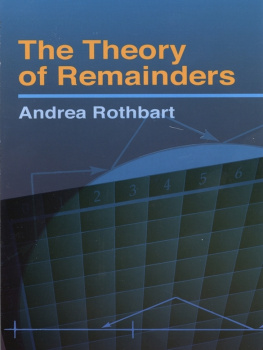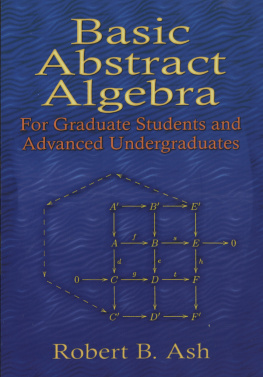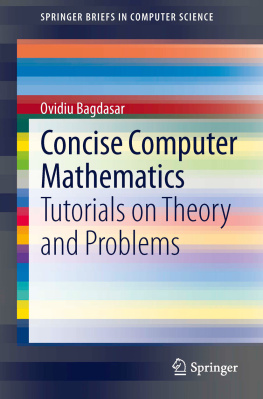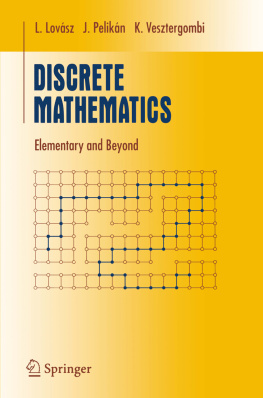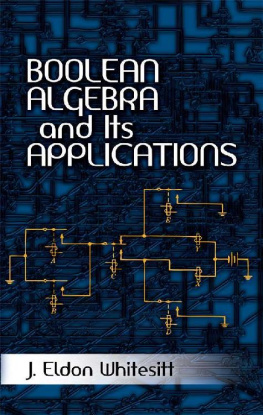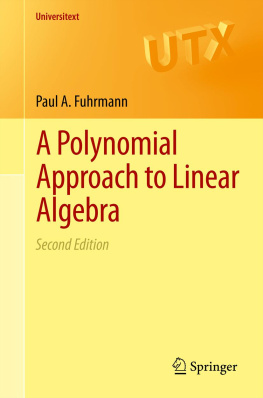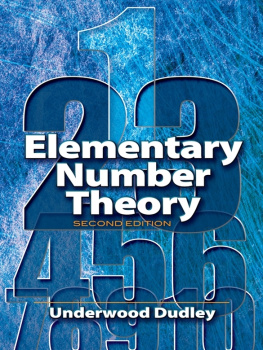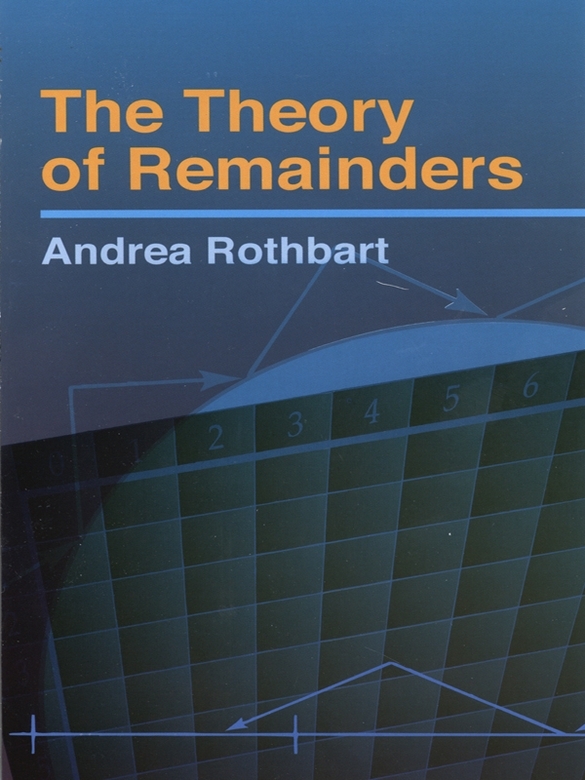Acknowledgments
I think therefore I am.
Rene Descartes, 1596 - 1650
I wish to express my gratitude to Andrea Rothbart and Gnam for their help with this book. However, rumors to the effect that I would have been unable to write it without their involvement are totally unfounded. Regarding the somewhat intrusive personal questions I have been asked, two of us are female and one of us is male. And, yes, two of us are fictitious and one of us is real. But for our purposes here, it is immaterial which of us are which. I hope these pages give you pleasure. But if not, as principal author I bear full responsibility, except for the notation used in analyzing Male Chauvinist Chess. Gnam is to blame for that.
Ant
If I thank does that mean I am?
Gnam
I am indebted to Richard Singer for sharing with me the fruits of his creativity and his mathematical perspective. Many of his ideas have been incorporated into this book. And I am grateful to Richard for having read earlier versions of the manuscript, and providing many excellent suggestions for improvement. Richard has been my most cherished colleague for more than thirty years.
When good fortune was being distributed, I got more than my fair share in the person of Eric Karnowski, my editor at Janson Publications. He has been a joy to work with. Eric is supportive, capable, and always right-on-target with his recommendations. And he spent his weekends at home fixing my poorly drawn diagrams, all the while assuring me that he actually enjoyed doing it!
I have always considered myself the worlds most spoiled teacher, for I have been consistently blessed with able and enthusiastic students. In particular, it has been my students who have kept me fueled with ideas and direction as this manuscript has undergone its numerous revisions. I remember, and am grateful to, each of my students for willingly assuming the role of guinea pig as this book was being developed, sharing ideas for improving it, and correcting my errors. (I call them typos!) In particular, I thank Don Love and Ev Corich.
My husband, Leo Rodenborn, was supportive and helpful in a variety of ways. He critiqued, he typed, and he never complained when I stayed up most of the night working and then slept through half the morning. Leo died shortly before this book first went to press.
Andrea
Commentary
by Richard Singer, Webster University
In a 19th century book on Quaternions, Hamilton gives a justification for the study of a non-commutative algebraic structure. Contemporary mathematicians would feel no need for justification. We would simply study any algebraic structure that interested us, and to interest others we would appeal to elegance or mathematical significance. The 19th century way of thinking seems so alien that we would hardly be aware of it, except for the fact that we encounter something like it in the majority of our students and perhaps somewhat in our own attitudes toward logic and set theory.
It is difficult to articulate the difference between the typical 19th and 20th century attitudes towards mathematics. For now we can summarize this difference by saying that they focused on subject matter, while we focus on a special way of studying abstract conceptual nets. They had concerns about the appropriateness of what we would have considered legitimate subject matter for mathematics. We regard anything which we can imagine formalizing as appropriate for mathematical study. In discussing the difference between 19th and 20th century mathematics with several mathematicians, they all agreed in principle with a conceptual versus paraconceptual distinction.
Conceptual versus paraconceptual A conceptual net is a collection of related concepts and conceptual distinctions that can be used to think and communicate about some realm of interest. Pure conceptual study involves the logical study of some realm which is itself a conceptual net. To be engaged in conceptual study is to focus on presenting, clarifying, and refining concepts. This always focuses on relationships among concepts within some conceptual net, either to clarify or refine the net or to create a new or alternative one. The goal is to obtain better knowledge and more skill in regards to the net being considered, and the only claims made are about the net under consideration.
On the other hand, most types of studies make what could be called paraconceptual claims, that is, claims that use concepts to talk about some states of affairs that are not being considered part of the conceptual net. Consider the game Gin Rummy. The jack of clubs is a club with the rank of Jack and with a value of 10. To study this game it is clear that a person must be able to use concepts like suit, rank, value, color of a suit, and same rank. Conceptually, a set is at least three cards of the same rank. Fairly trivial reasoning reveals the conceptual claim that any set must contain at least one red card. Mere conceptual analysis of the game rules will not demonstrate that it is poor strategy to keep large cards too long. This is a paraconceptual claim, rather than a conceptual one relative to this net. In a conceptual net that included probability as well as the game rules, some claims about strategy could be construed as conceptual rather than as paraconceptual.
Expectations for students There is a radical difference in our expectations for those we consider potential mathematicians and a more general audience who we think will merely use mathematics. The latter are seldom exposed to mathematics as a conceptual net. For them mathematics is generally taught as a collection of algorithms, with applications to word problems that students generally dislike and find rather pointless. They are told that mathematics has important applications or that they will need this material in more advanced courses. Since most of the mathematics taught in secondary school and early in college have applications that most students lack the background to appreciate, this hardly provides perspective either on the internal nature of mathematics or on its place in the broader scheme of our intellectual tradition.
Students majoring in mathematics are exposed to many abstract definitions and proofs, and while the emphasis is placed on knowing results, students are also expected to absorb our contemporary way of thinking. Unfortunately neither this nor the difference between the contemporary and older perspective on mathematics is examined, except on rare occasions. As a result only a minority of such students gain much perspective on the nature of contemporary mathematics, and few have any explicit historical perspective on mathematics and its epistemological significance.
The Theory of Remainders The mathematics in the Theory of Remainders focuses on the study of modular structures in a way that challenges the students to adopt a 20th century perspective and to do some significant thinking from this perspective. However, it accomplishes this without requiring the student to have an extensive mathematical background. Modular structures are presented as algebraic structures in their own right rather than from the older perspective of congruences.
- Since these structures are rings, they have the properties needed to use and reinforce many standard ideas of ordinary algebra. The fact that these ideas are inherent in the conceptual net, rather than somehow being specialized to subsystems of the complex numbers, is well illustrated.
- Since some modular structures are not cancellation rings, the presence of zero divisors can be contrasted with their absence in more familiar systems, and this can be related to finding solutions of equations in both types of structures. The fact that these structures are not ordered rings gives a plausible reason to examine the concept of negative numbers from the broader perspective of additive inverses. That some of these structures are fields illustrates the algebraic nature of multiplicative inverses.

